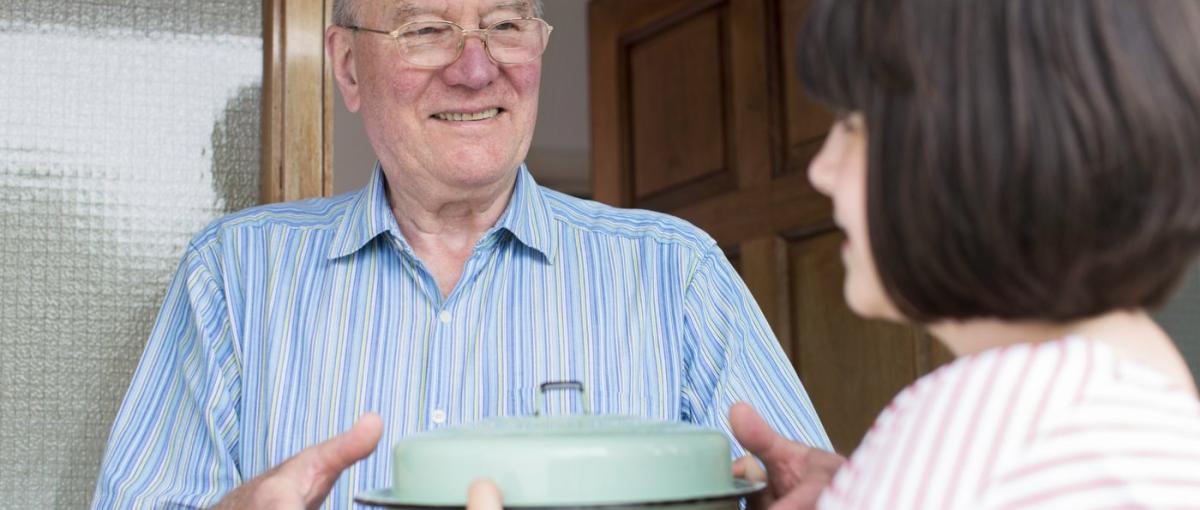Helping people live and die well
Compassionate communities provide a holistic approach to palliative care

October 17, 2018
By Brenton Driedger, Social Media and Storytelling Advisor, Covenant Health
The phrase “it takes a village” is usually used to describe raising children. But Cheryl Nekolaichuk thinks it applies to the end of life, too.
“I think it takes a village to support a person who is dying or who is in advanced cancer or terminal stages of his or her illness,” says Cheryl, Professor in the Division of Palliative Care Medicine in the Department of Oncology at the University of Alberta.
The village metaphor reflects a shift that palliative care needs to address the whole person, in the hospital and in the community, support that is shared by medical teams, family, friends and neighbours. The concept, known as compassionate communities, is the theme of this year’s Palliative Research and Education Day in Edmonton on Oct. 22.
“A compassionate community is a group of people that provide compassion, care and support to people who are seriously ill or frail, and their families."
Carleen Brenneis, Director of the Palliative Institute and one of the conference co-chairs with Cheryl and Dr. Robin Fainsinger.
The approach is gaining traction in countries like the United Kingdom and Japan, and is starting in pockets of Canadian communities. The goal is to bring together what is sometimes seen as two different spheres of care: health care professionals who provide medical expertise and social networks who help with moral support and other areas such as chores around the home.
Some Alberta communities provide real-life examples of this holistic model. Cheryl points to a pilot project at Covenant Health sites in Killam and Camrose, Nav-CARE, which builds on research in rural British Columbia. It trains volunteers to work as navigators for older rural adults with serious illness, connecting them with information, resources and people to meet their needs. In 2016-17, nine volunteer navigators, supported by one specially trained nurse navigator, helped 23 participants, improving their independence and quality of life. The project was initially funded by Covenant’s Network of Excellence in Seniors Health and Wellness (NESHW). Thanks to other funding, it’s been expanded to 11 sites across Canada with the potential to add 15 more.
Now in its 29th year, the conference hopes to build on this and other work on compassionate communities. For example, research from Dr. Martin LaBrie at the University of Calgary shows how hospice societies provide benefits to the whole community, not just patients and families. A national non-profit organization pushing for the expansion of palliative care, Pallium Canada, has published a toolkit to help people establish their own compassionate communities.
“If you have an infrastructure in place when people become ill, then they have other supports to lean on or draw from,” says Carleen.
“So part of it is creating that kind of a structure for when there is a need, rather than in time of need.”
Some people have strong informal networks in place long before they get a diagnosis. And when they get sick, they have plenty of friends, family, neighbours, or members of their faith community who visit, bring meals, mow the lawn, babysit young children, or even guide them through estate planning and finalizing their will. But when they don’t, someone else in the village needs to help, perhaps a member of the interdisciplinary palliative care team.
“A lot of home care staff are really good at this,” says Carleen. “They’ll say, ‘Who can help you? Who else do you have around you? Bring them in.’ It’s encouraging that community instead of the isolation that can occur.”
An increased willingness to talk about death is a key factor in paving the way for compassionate communities, says Viki Muller, Research Program Coordinator at the Palliative Institute.
“I think something like compassionate communities and people taking ownership of it allows people to become more comfortable with it, and enables people to become empowered and talk about it as a dying moment, preparing for death, dealing with loss, and dignity, and then bereavement,” says Viki.
“There’s a paradigm shift going on right now, where we need to demystify and start talking more about death, and people are becoming more comfortable with that.”
But there’s still room to grow. That’s why Carleen says this conference is important in developing and expanding palliative care in Alberta and beyond, in part by building compassionate communities.
“They connect you, they make you happier, and they help you find meaning in life.”